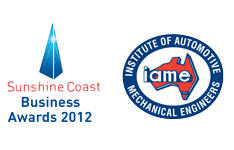Tech Talk
Subaru P2764 fault code – Choose the repair option rather than replacing the valve body assembly and saves $ THOUSANDS $
Subaru’s are throwing out a P2764 fault code, the first sign you may experience is that lights come up on the dash! Further driving problems include engine stalling, transmission overheating and erratic gear shifting. This code is something not to be ignored because it means the ECU is having trouble engaging and disengaging the TCC clutch.
How Does the Torque Convertor Clutch Pressure Control Solenoid Work?
Automatic transmissions use pressurised hydraulic fluid (automatic transmission fluid) to change gears. When the Automatic Transmission changes gears the car’s computer activates a transmission solenoid that directs transmission fluid into the valve body to engage the correct gear. If one of these electro-mechanical valves fail (in this case it’s the P2764 code) then many transmission problems will become evident.
When you’re driving down the road, the car’s computer analyses data being sent by vehicle speed sensors and engine speed sensors. Based on this information, the Engine Control Unit (ECU), or the Transmission Control Unit (TCM), selects the appropriate upshift / downshift by sending a signal to one of several shift solenoids. These transmission solenoids have a spring-loaded plunger inside and are wrapped with wire. When this coil of wire receives an electrical charge from the TCM / ECU, it causes the plunger to open, allowing transmission fluid to flow into the valve body and pressurise the desired clutches and bands. When this happens, the transmission changes gears and you enjoy the smooth ride.
REPAIRING the valve body rather than a full replacemant will SAVE $$$
We are opting to REPAIR the valve body and replace the FAILING Torque Convertor Clutch Pressure Control Solenoid. This is a cheaper alternative to the dealers option of an EXPENSIVE REPLACEMENT of the complete valve body assemble.
TRANSMISSION PROBLEMS YOU MAY EXPERIENCE INCLUDE:
- Harsh, erratic shifts
- Engine stalls while stopped in gear
- Transmission overheats
- Vehicle won’t move in gear
- Increased fuel consumption
- Going into limp mode




